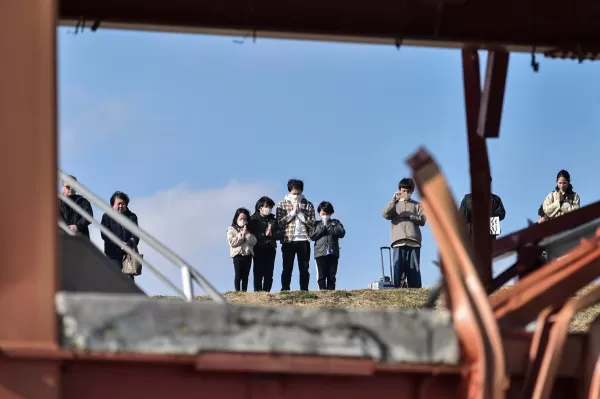Over the past few weeks, an otherwise little-known manga has sparked widespread discussion both in Japan and internationally. In *“The Future I Saw”* (*Watashi ga Mita Mirai*), author Ryo Tatsuki claims to have foreseen a massive natural disaster striking Japan in July 2025. This prediction has led some travelers to reconsider their summer plans to visit Japan, while social media platforms across the country have been flooded with reactions—both concerned and skeptical—to the claim.
What makes this situation even more unusual is how it has intertwined with the release of an upcoming Japanese horror film set to premiere just weeks before the predicted event. The movie, titled *“July 5, 2025, 4:18 AM,”* draws inspiration from Tatsuki’s work and further fuels speculation and anxiety among some audiences. But why are people paying attention to a manga written decades ago? And how did a fictionalized interpretation of its premise end up amplifying public concern?
Origins of the Prediction
Ryo Tatsuki first published *“The Future I Saw”* in 1999. The manga presents a semi-autobiographical account of Tatsuki’s life, centered around dreams she recorded in her diaries dating back to 1985. On the cover of the original edition, Tatsuki’s character appears with one hand raised to her eye, surrounded by floating postcards depicting various future events. One such postcard reads: “March 2011: A Great Disaster.”

Following the devastating Tohoku Earthquake and Tsunami in March 2011, readers rediscovered the manga. Its eerie accuracy prompted renewed interest, pushing out-of-print editions to fetch high prices on online auction sites. In 2021, a new version was released—the *“Complete Edition”*—which included an additional vision: a forecast that a far greater disaster would occur in July 2025. According to Tatsuki, a tsunami three times larger than the 2011 event could strike Japan.
Viral Spread and Travel Impact
Given the coincidence of Tatsuki’s earlier accurate prediction, the 2025 warning quickly gained traction online. While it’s difficult to measure the full extent of the panic, reports indicate that some travelers—particularly in Hong Kong—are choosing not to visit Japan this summer due to concerns about the alleged disaster. The manga is available in translation there, and local influencers like Master Seven, a well-known fortune-teller and TV personality, have amplified the message by suggesting Japan faces heightened earthquake risk between June and August 2025.
Domestic Japanese news outlets, including ANN News, have reported that airlines based in Hong Kong are adjusting their flight schedules to Sendai—a city heavily affected by the 2011 disaster—and Tokushima. Hong Kong Airlines has canceled weekly flights to Sendai, while Greater Bay Airlines has reduced direct services to both cities between May and October, citing decreased demand. Although economic uncertainty may also play a role, many attribute the drop in bookings to fears surrounding the manga’s prophecy.
Official Response and Public Concerns
Miyagi Prefecture Governor Yoshihiro Murai addressed the issue during a press conference at the end of April, dismissing the predictions as unscientific and urging tourists not to be misled by fear-driven narratives. His comments reflect broader government efforts to reassure the public amid growing unease fueled by online discourse.
Media Spotlight and Movie Tie-In
As mainstream media coverage of *“The Future I Saw”* has intensified, so too has public interest. By mid-May 2025, the *Complete Edition* had sold over one million copies. This resurgence coincides with the impending release of *“July 5, 2025, 4:18 AM,”* a horror film set to debut in Japanese theaters on June 27. The story follows a protagonist whose strange experiences begin around her birthday on July 5, drawing thematic inspiration from Tatsuki’s manga.
While the movie does not officially endorse or confirm the manga’s predictions, some social media content inaccurately suggests that the title refers to the exact date of the predicted disaster. This confusion has only added fuel to the fire, blending scientific facts about real seismic risks with sensationalist interpretations.
In response to misinformation circulating online, publisher Asuka Shinsha issued a formal statement clarifying that Tatsuki never specified the precise date and time mentioned in the film’s title. The company urged the public to avoid being misled by fragmented or misleading information appearing in media and on social networks.
Scientific Reality vs. Superstition
It’s true that Japan sits within one of the most seismically active regions in the world. Scientists estimate a 70–80% chance of a Nankai Trough megaquake occurring within the next three decades. Such an event could impact major urban centers and potentially result in over 300,000 fatalities, along with catastrophic tsunamis. However, as the Japan Meteorological Agency clearly states on its website, predicting the exact date and location of an earthquake remains impossible, and any such claims are considered hoaxes.
Despite this, Tatsuki’s prior “hit” with the 2011 prediction has led some to believe she possesses genuine foresight. Critics on platforms like X (formerly Twitter) have expressed frustration at what they see as unnecessary alarmism. One user remarked, “It’s stupid to believe in disaster predictions from a manga. The Nankai Trough quake could happen today or tomorrow.”
Author’s Perspective
Tatsuki herself has acknowledged the surge in attention, expressing satisfaction if her work has increased public awareness of disaster preparedness. However, she has also encouraged people not to overly rely on her visions and to instead follow expert guidance when making decisions about safety and travel.
Conclusion
While *“The Future I Saw”* has certainly captured the public imagination, it’s important to separate fiction from fact. Japan’s vulnerability to earthquakes and tsunamis is very real, but basing travel decisions or personal actions on unverified predictions found in a manga is not advisable. As authorities continue to monitor seismic activity using scientifically sound methods, the best course of action remains staying informed through official channels and preparing for emergencies responsibly.































